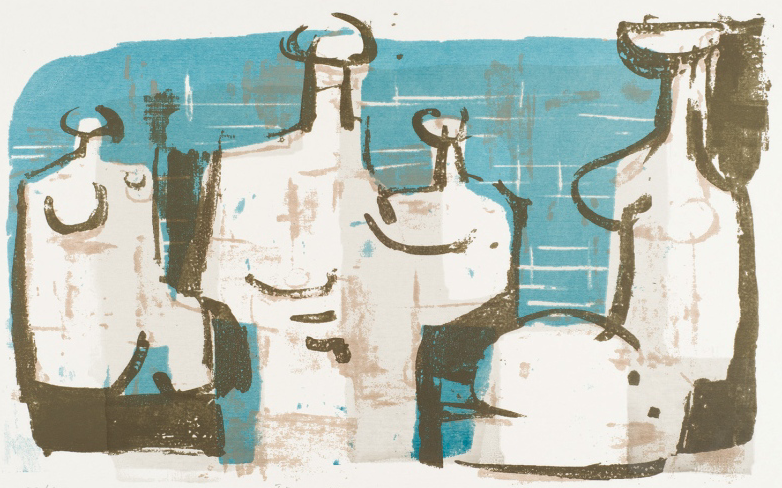Photo by Carl Sprietz
Selected Collections
Confederation Art Museum, Charlottetown, P.E.I.
Memorial University of Newfoundland, St. John's, NFL
Ocelot International Inc., QB
Royal Ontario Museum, Toronto, ON
Edmonton Art Gallery, AB
Vancouver Art Gallery, Vancouver, BC
The Feckless Collection, Vancouver, BC
Victoria Art Gallery, BC
City of Victoria, BC
University of Victoria, BC
B.C. Provincial Collection, Victoria, BC
City of Berlin, Germany
Princess Fernanda von Thurn and Taxis, Germany
The Kleinburg Museum
The City of Carpi Museum of Xylographia,
Seattle Art Museum, WA
Herbert Siebner, 1925 - 2003
Herbert Johannes Josef Siebner was an influential artist, educator, and eccentric, bohemian character who organized and influenced Victoria’s art scene in the 1960's and beyond . His robust, zest for life and distaste for authority developed after his experience of living in Nazi-ruled Germany.
Siebner was born Stettin Prussia, (now Germany). He studied fine arts under Dr. Ernst Schumacher at the Schiller Real Gymnasium in Stettin (1937-41), and graphic arts under Professor Atelier Max Richter in Stettin (1941-43).
His studies were interrupted when Siebner was called to serve in the German Army from 1943 to 1945, until he was captured by the Russians. After the war, he returned to Berlin and finally finished his studies at the College of Art in Berlin (1946-49). However, experiencing life under the Nazi regime left a lasting impression on Siebner who developed a mistrust for authority.
Siebner emigrated to Canada in 1954, settling in Victoria, BC, where he opened an art studio and began teaching. Canada was an opportunity for Siebner to break free of the oppression he felt in Europe.
“For the first time I could make all the mistakes in art, all experiments necessary to an artist without having a guilt complex about my teachers and colleagues.”
Requote from Robin Skelton, Herbert Siebner: A Celebration, 1993
In Victoria he would have a massive influence on the art scene, reaching students through his studio and classes. He brought modernism to Victoria and a sense of freedom and experimentation to his work, and to the work of those around him. He initiated The Point Group, (it is said that Siebner often exclaimed “Come to the point!”, hence the name of the group was born) and exhibited his work that drew inspiration from antiquity, mythology and personal fables.
Siebner worked every media; paint, printmaking, sgraffito and stone appear in public spaces such as the Student Union Building at the University of Victoria and the Royal BC Museum.
He was a prolific exhibitor, first holding a one-man show at the Art Gallery of Greater Victoria one year after his arrival in 1955, and by 1958, Siebner's art was displayed in Berlin, Toronto, Vancouver, Victoria, Seattle, Eugene, Los Angeles and Switzerland. In 1956 he won the Canadian National Award in Graphic Arts, and in 1962-63 Siebner returned to Europe, traveling and working on a Canada Council Senior Arts Fellowship grant.
In 1971, a group of like-minded artists in Victoria, BC formed The Limners. Siebner, along with Max Bates,, Myfanwy Pavelic, Karl Spreitz, Nita Forrest, Richard Ciccimarra, Robert de Castro, Elza Mayhew and Robin Skelton was one of the founding members of the
group and exhibited with them often.
Siebner died in Victoria BC in 2003.


